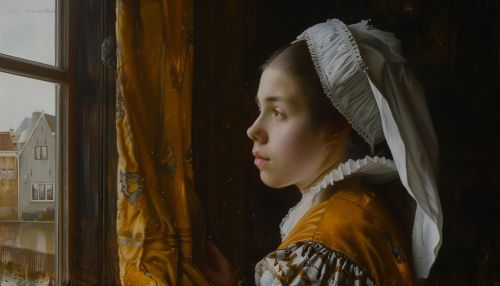Johannes Vermeer
Early Life
Johannes Vermeer was born in 1632 in the Dutch city of Delft, where he lived and worked his entire life. His father, Reynier Janszoon, was a middle-class worker of silk or caffa (a blend of silk and cotton). He also owned an inn, which Vermeer took over after his father's death.
Artistic Training
Little is known about Vermeer's artistic training. It is generally believed that he was taught by local painter Leonard Bramer. However, some speculate that he might have been an apprentice in the studio of Carel Fabritius, a student of Rembrandt.
Career
Vermeer began his career as a history painter, creating large-scale depictions of biblical and mythological scenes. However, he soon shifted his focus to genre scenes, which are depictions of everyday life. He is best known for his masterful treatment of light and his meticulous attention to detail in these scenes. His most famous works include "The Milkmaid", "Girl with a Pearl Earring", and "The View of Delft".
Technique and Style
Vermeer's paintings are characterized by their serene and luminous quality. He achieved this effect through his masterful use of light, often using a window on one side of the canvas to illuminate the scene. He also frequently used the technique of pointillism, applying small, distinct dots of color to his canvases to create the illusion of a wider range of hues.
Personal Life
Vermeer married Catharina Bolenes, a Catholic, in 1653. The couple had 15 children, 10 of whom survived into adulthood. Despite his artistic success, Vermeer lived most of his life in financial difficulty, due in part to his slow rate of production and his large family.
Death and Legacy
Vermeer died in 1675, leaving his family in debt. His work was largely forgotten until the 19th century, when he was rediscovered by art historians. Today, Vermeer is considered one of the greatest painters of the Dutch Golden Age.


